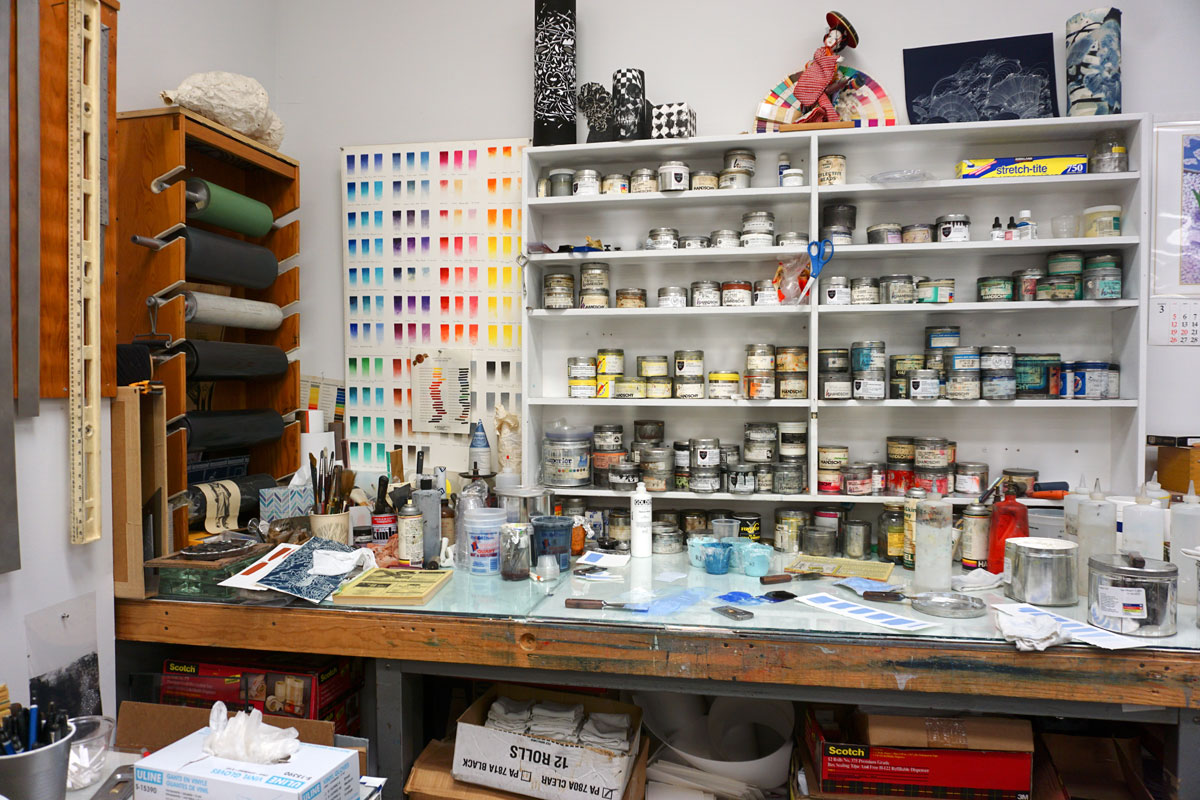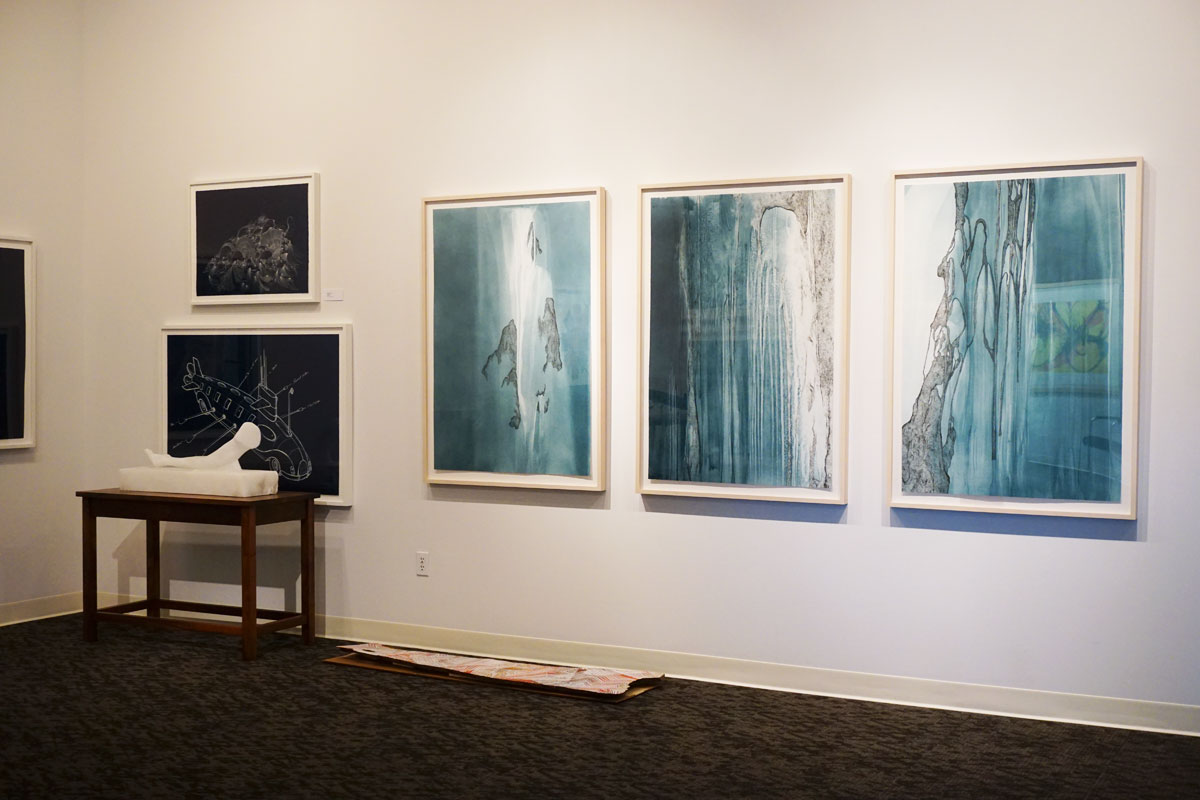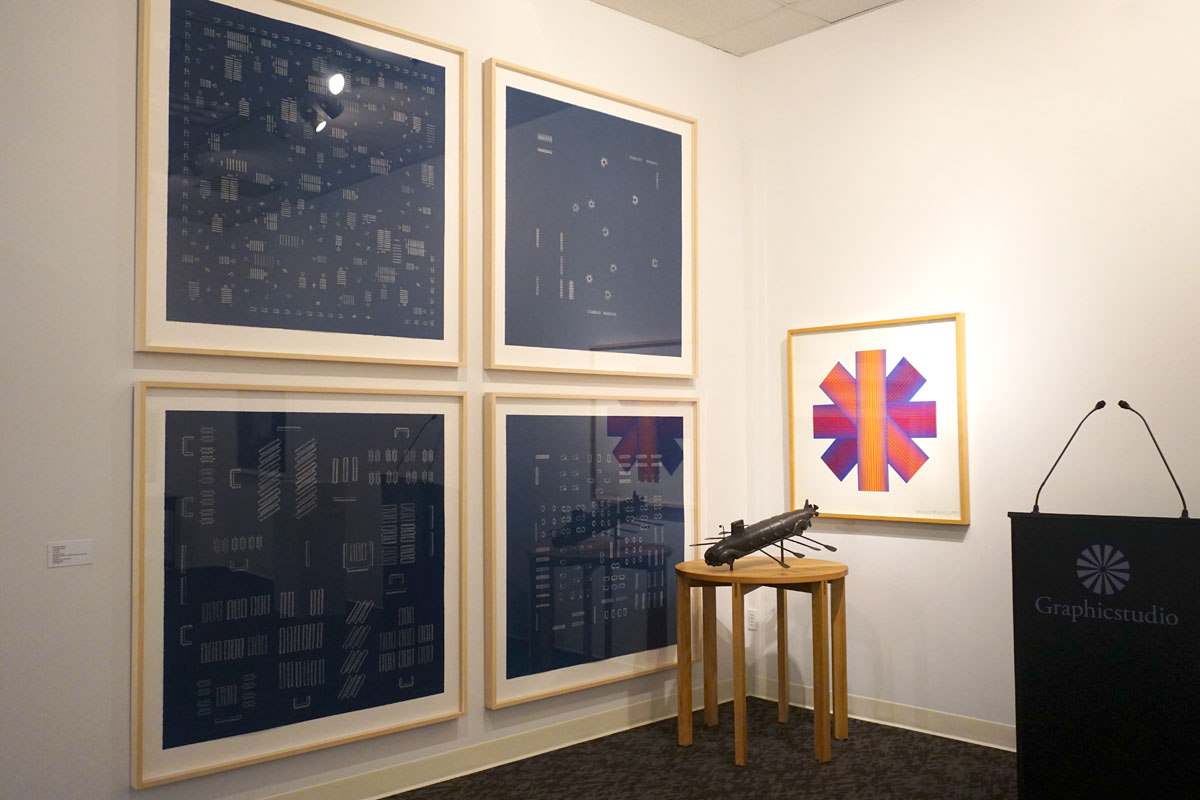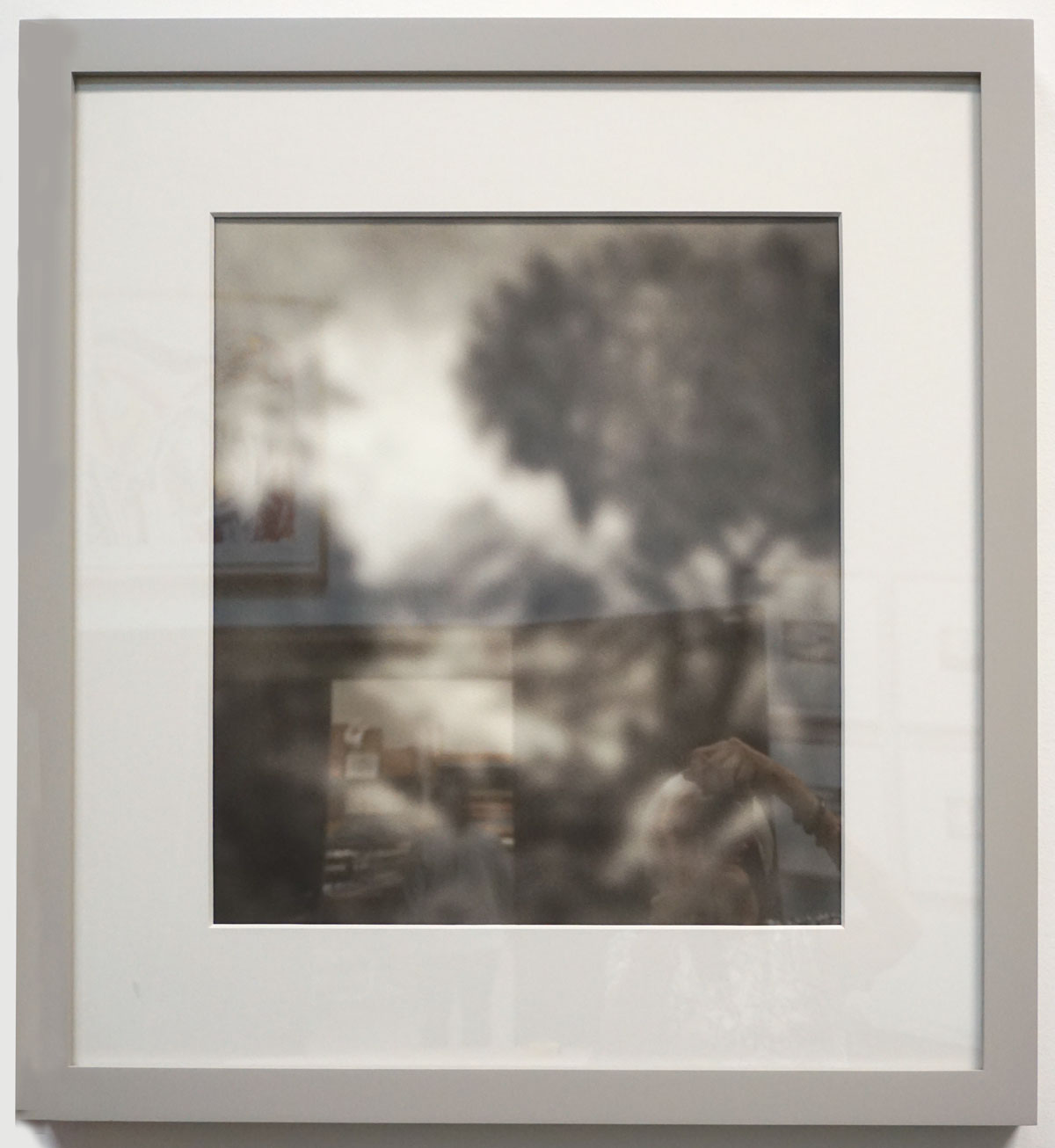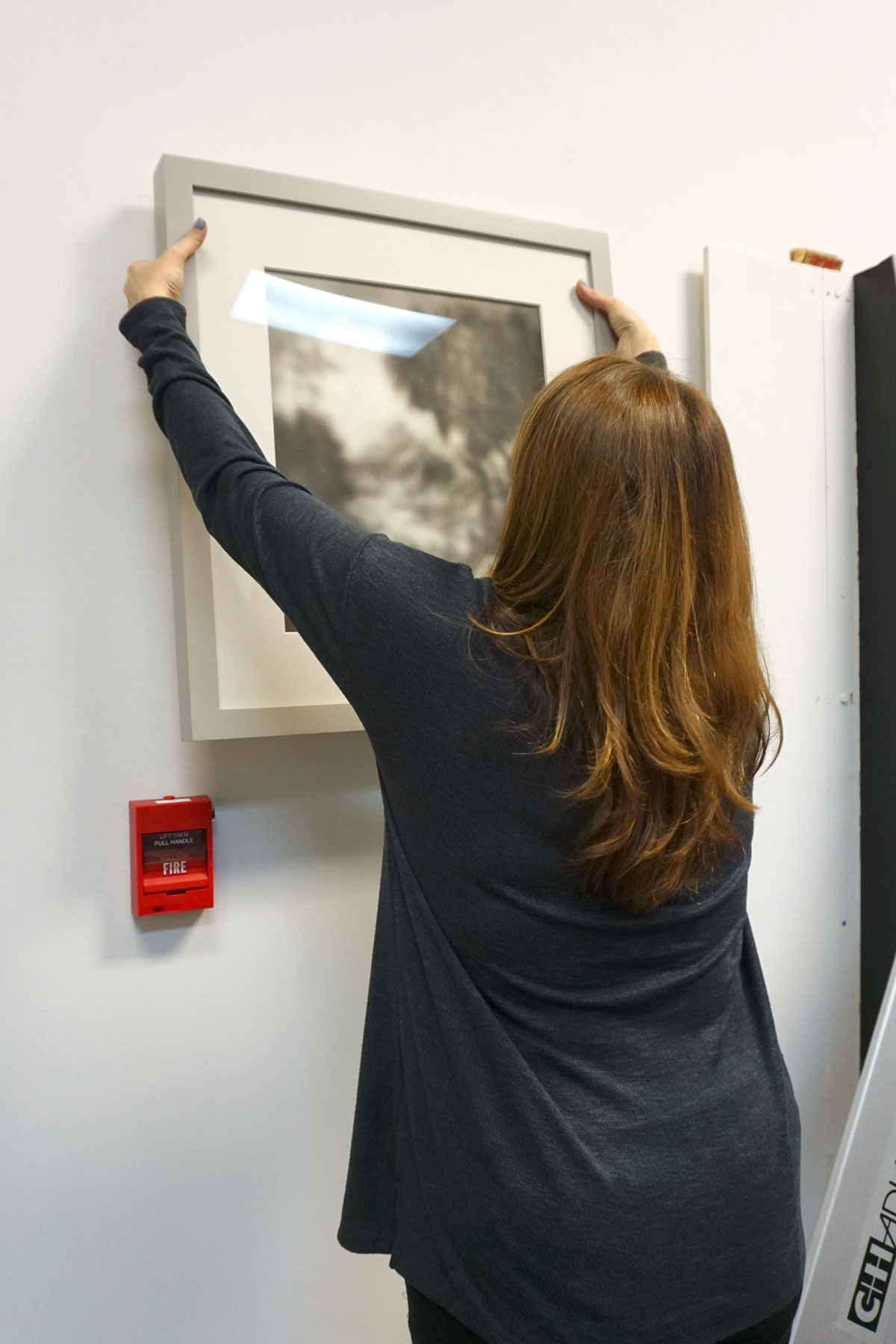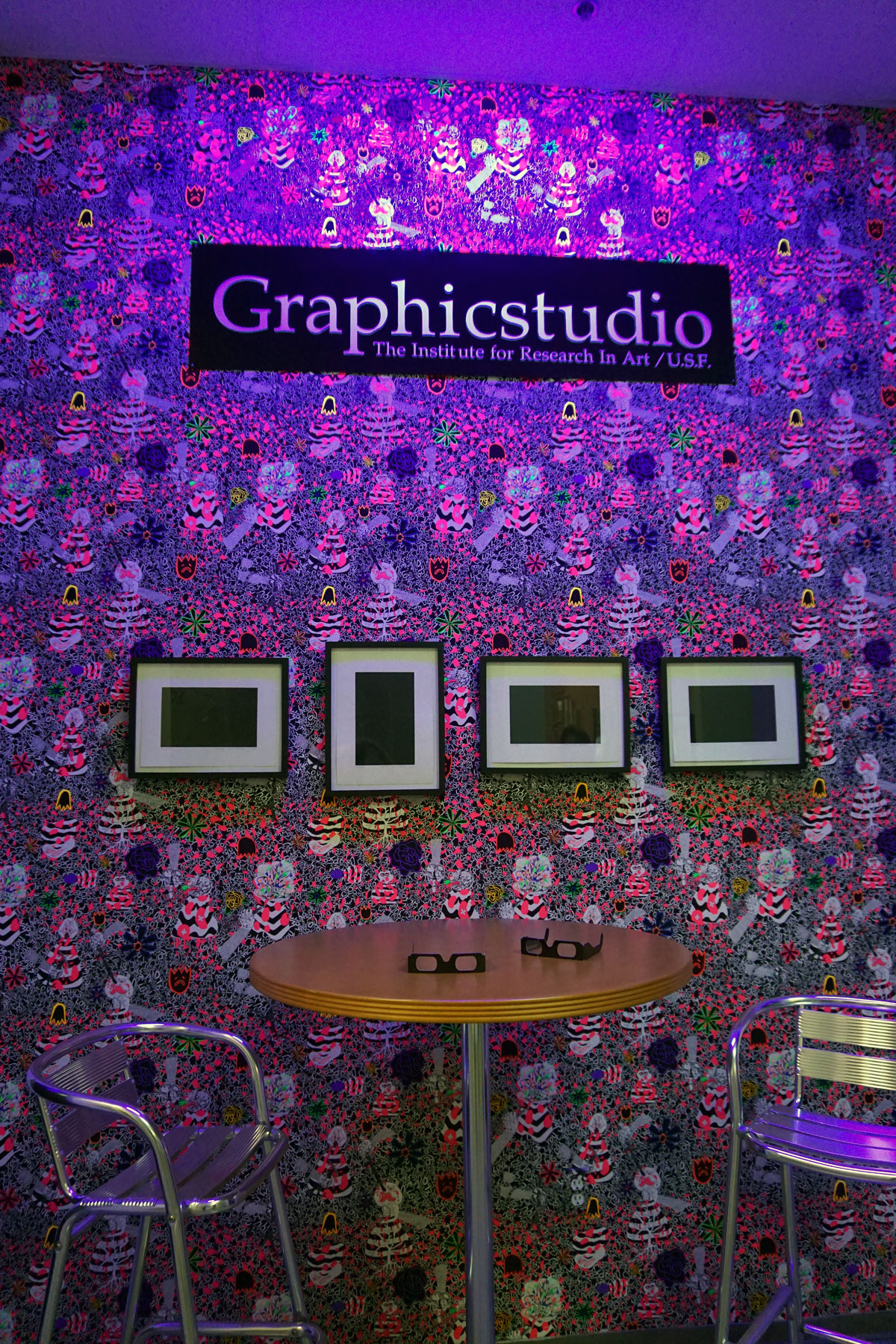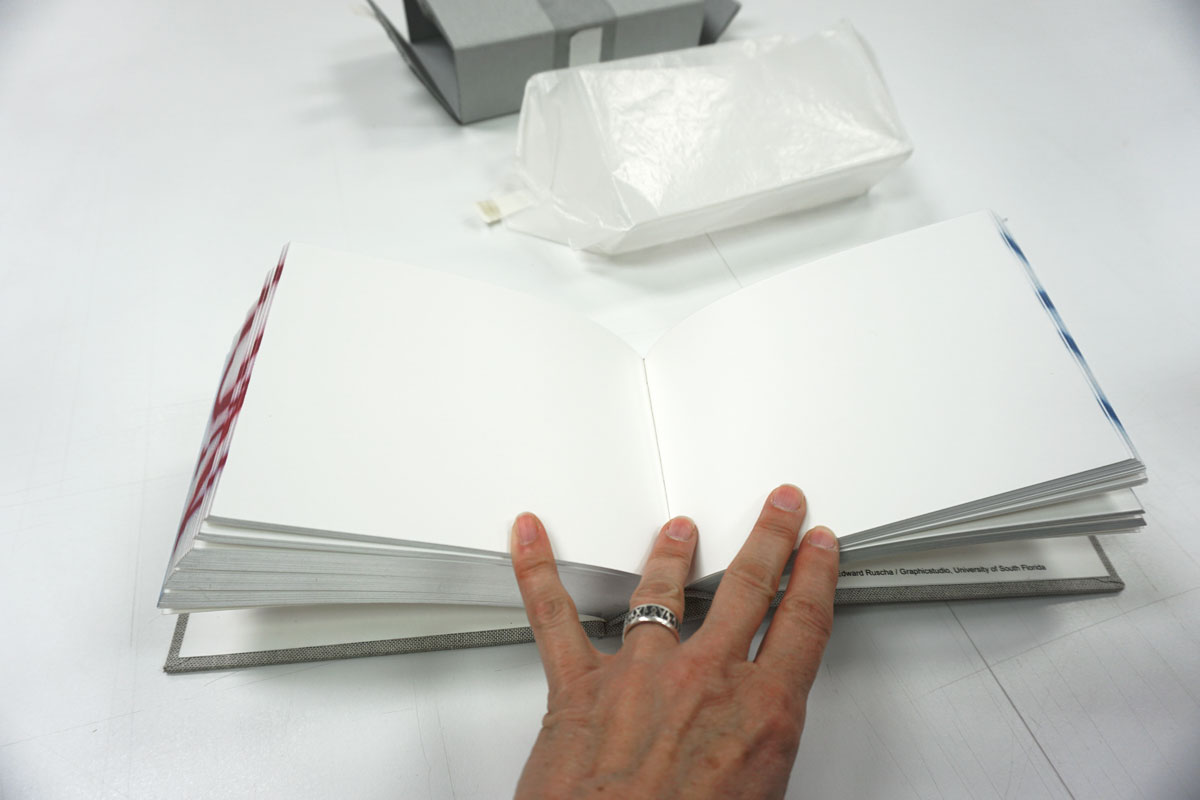University libraries and artists where part of my research for my séjour in Florida. Therefore, I was prepared to visit local studios and collections. I arranged a meeting at Graphicstudio, which is an essential part of the University of South Florida Institute for Research in Art in Tampa.
Graphicstudio, founded in 1968, is a university-based workshop engaged in a unique experiment in art and education. Its philosophy to provide artists with the freedom to experiment and pursue new directions to advance their practice, is matched with an exceptionally talented faculty and staff. This combination has attracted world-renowned contemporary artists to the University of South Florida.
© 2019 Louise Levergneux. Graphicstudio printing room.
Since its beginning, the studio has invited over 100 emerging and established contemporary artists from around the world that have worked in a range of styles and media to produce more than 1,000 limited edition print and sculpture multiples.
© 2019 Louise Levergneux. Graphicstudio’s wall of paint.
© 2019 Louise Levergneux. Graphicstudio’s archival ink printers.
One of the first workshops at Graphicstudio was with Robert Rauschenberg. The artist, along with a dedicated group of faculty, staff and students, avidly experimented with forms and techniques — photo transfer, cyanotype, sepia prints, printing on cloth and ceramics, sculptures with new materials, a hundred-foot-long photograph — and ultimately completed over sixty editions. The studio’s reputation as a place where faculty and staff will eagerly pursue and collaborate with the artist’s every idea and inspiration was established in those early days. This innovative environment continues to be a major factor in its continuing success.
© 2019 Louise Levergneux. Tim Baker preparing prints for colour run.
© 2019 Louise Levergneux. Carlos Garaicoa, Terrasse St. Denis, 2011, 2-run photogravure with hand-cut folded elements, 17-3/8 x 14.25 x 5-3/16”.
Graphicstudio practices traditional printmaking techniques including intaglio, lithography, silkscreen, and relief along with photogravure, cyanotype and pigment prints. Sculpture multiples are produced in a range of media which include bronze, steel, aluminum, wood, rubber, and less traditional materials including lava (basalt) and pigmented resins.
Walking into Graphicstudio, I was greeted by Kristin Soderqvist, Director of Marketing and Sales. Kristin hosted a tour of the gallery and facility, explained Graphicstudio’s mission, and shared her knowledge about all the work that enrich the walls by artists who created works.
© 2019 Louise Levergneux. Kristin Soderqvist showing me around the studios.
The first prints I noticed were of Sandra Cinto, known for her large-scale, dramatic scenarios incorporating water, the night sky and billowing seas.
© 2019 Louise Levergneux. top left: Sandra Cinto, Open Sea, 2016, Cyanotype, 22 x 30”; left middle: Esterio Segura, Homemade Submarine SJXXII, 2017, Cyanotype, 32.125 x 46”; left bottom: Sandra Cinto, Untitled, 2016, sculpture: Alabaster, 13.5 x 36 x 12”, base: 30 x 40 x 21”, Walnut Hardwood; right: Sandra Cinto, Chance and Necessity, 2016, suite of 5 two-run, two-color direct gravures with photogravure, 49.75 x 34” ea.
As one walks through a hallway, Mark Dion’s Herbarium, initiated in 2007, is noticeable. Herbarium is a suite of etchings printed in two runs. To provide the paper, an aged look, an acrylic wash was hand painted on each sheet of paper, then run with a spit-bite aquatint similar to the wash.
© 2019 Louise Levergneux. right: Mark Dion, World in a Box, 2015, suite of 27 prints (lithography, cyanotype, digital, screenprint, etching, letterpress and woodcut) in a custom-made oak wood storage box with etching and letterpress cover image (on lid) and lithograph inventory list (inside lid), 13.125 x 10.187 x 1.625”. right top: Burt Barr, Wave.
Wave by Burt Barr was one of the first digital inkjet prints produced at Graphicstudio. You can examine the piece, Wave, that was installed as a continuous image, 38 feet long along the wall at ceiling height. I was intrigued about the process — Barr’s film August provided imagery for his project. Reoriented as a suite of five panels of three images each, Wave considers the perception of nature, pushing the boundary of its presentation through the scale of the project.
© 2019 Louise Levergneux. left: Guillermo Kuitca, The Neufert Suite, 2002, suite of six cyanotypes
46.5 x 46.5”; right top: Richard Anuszkiewicz, Blue Tinted Star, 1991, Five-color lithograph / screen-print assemblage, 36 x 38 x 1.062”; on pedestal (H 33.25” x diam 33”): Esterio Segura, Submarine Homemade, 2018, bronze with applied patina and white oak pedestal, 12.75 x 26 x 29”.
© 2019 Louise Levergneux. Fred Tomaselli, Untitled (bloom), 2018, archival pigment print with 11-run screenprint, 58 x 46” being printed.
© 2019 Louise Levergneux. Fred Tomaselli, Untitled (bloom), 2018, archival pigment print with 11-run screenprint, 58 x 46” finished print.
© 2019 Louise Levergneux. Mernet Larsen, Raft, 2018, 13-color lithograph with collage elements, 33.75 x 34.25”.
Once I was shown Allan McCollum’s Lands of Shadow and Substance, I was intrigued. Allan viewed the original Twilight Zone episodes from 1959 to 1964 on his laptop computer, capturing screenshots of scenes that included landscape paintings. Images of those paintings were digitally edited, printed, and custom framed to create the series entitled Lands of Shadow and Substance. Each of the 27 works in the series are archival pigment prints that have been printed proportionally to its original televised incarnation and is in an edition of three. The series was printed using Epson UltraChrome HDR inks on an Epson Stylus Pro 7900 and framed in custom manufactured frames. Each piece is signed on a label on the back of the frame with a reference image and on the back of the print itself.
© 2019 Louise Levergneux. Allan McCollum, Lands of Shadow and Substance (No. 1 – 27), 2014, archival pigment prints, various sizes.
© 2019 Louise Levergneux. Kristin removes Allan McCollum’s Lands of Shadow and Substance off the wall to show me the signed label on the back of the frame.
In the back hallway you are confronted with a wall covered in psychedelic, black-light reactive wallpaper. This screen printed wallpaper with fluorescent inks was a 2008 project with artist Trenton Doyle Hancock and is called Flower Bed II: A Prelude to Damnation.
© 2019 Louise Levergneux. Trenton Doyle Hancock, Flower Bed II: A Prelude to Damnation, 2008, 10-color screen printed wallpaper with fluorescent inks, 27” x 5 yards
© 2019 Louise Levergneux. Frame above table: Trenton Doyle Hancock, Wow That's Mean, 2008, suite of four etchings on black paper with chine colle, each: 10.5 x 14”.
Imagine what I was impressed with the most — Ed Ruscha artists’ books of course. Since Kristin new I was an artists’ book maker, she made sure, I viewed two of Ruscha’s artists’ books ME and THE and OH NO.
© 2019 Louise Levergneux. On wall in background: Philip Pearlstein, Jerusalem, Kidron Valley, 1989, heliorelief with roulette on wood, 40 x 119”. Kristin opening the boxes that contain Ed Ruscha’s artists’ books Me and The, and OH NO.
© 2019 Louise Levergneux. Ed Ruscha, 2006, OH NO, colophon page.
© 2019 Louise Levergneux. Ed Ruscha’s OH NO, inside pages.
© 2019 Louise Levergneux. Kristin demonstrates Ed Ruscha’s artists’ book ME and THE.
© 2019 Louise Levergneux. Kristin demonstrates Ed Ruscha’s artists’ book ME and THE, when the gilt edge of the fore-edge is fanned the another way.
Well, I was here in Tampa 30 years ago when Graphicstudio was around the corner from the university art museum. It was a small operation and when I came back I had no idea what to expect. When I saw what was there, I was kind of stunned to see how fine everything was. You had this gallery and not only just the gallery and the space and the presses and the different rooms and the staff and all that, but actually had many work to back this whole thing up. I was just completely impressed and touched by everything I saw. It’s quite a facility.
Thirty years later in 2000-01 Ruscha returned to the atelier, this time for a suite of color photogravures and a limited-edition artist book. The early and late bodies of work share striking similarities in the interplay of word and image and in the exploration of the intersection of fine art and commercial printing techniques, and display an enduring commitment to the artist book form by Ruscha, a pioneer of the artist book movement in the 1960s. ME and THE (2002 cloth covered book with one-color fore-edge printing and gold leaf edges, closed book: 5-1/4 H x 7-1/2 W x 2-1/8 D inches, an edition of 230) and OH NO are fore-edge books, with printing that appears when the gilt edge is fanned one way or another. The pages of the book are blank, perhaps a commentary on the meanings we would ascribe, or fail to ascribe, to such seemingly simple words.
© 2019 Louise Levergneux. Abel Barroso, Tabaco con Ideologia (Cigars with Ideology), 2001, handmade Spanish cedar bas-relief “cigar box” with woodblock print (inside lid) and lithograph scroll-print (inside box) viewed by turning two hand-carved crank handles attached to moveable parts; TEXT by artist
9 x 16-3/8 x 3”.
It was an amazing afternoon of exploring the various rooms for lithography, silkscreen... And witnessing all the excellent work that Graphicstudio and artists have accomplished together. If you are in Tampa make an appointment to visit this facility. A visit to Graphicstudio was an incredible sensory experience!



